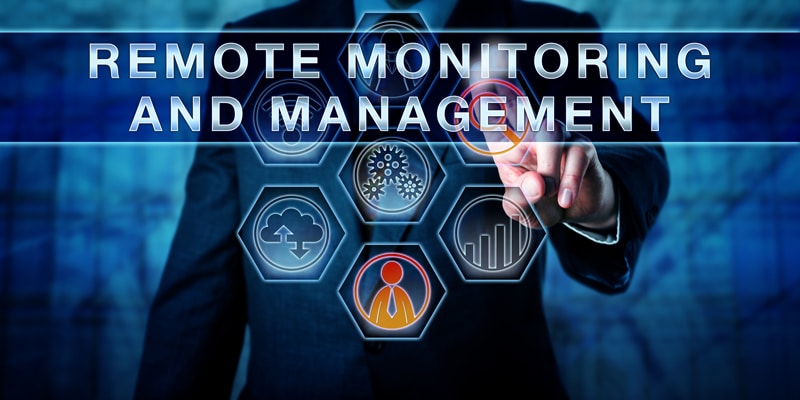Remote patient monitoring is an ideal healthcare option for patients as well as physicians to reduce the number of hospital visits and the duration of hospitalization. While telehealth is an interactive session in which a healthcare professional provides direct clinical services where the patient is not physically present in a health care facility, remote patient monitoring (RPM) refers to technology used to continually assess a person’s health status. In 2018, the Centers for Medicare & Medicaid Services (CMS) finalized plans to reimburse healthcare providers for certain remote patient monitoring and telehealth services. Physicians providing such consultations can consider services from reliable medical billing companies to complete their medical claim documentation for reimbursement.
According to a report from Research Cosmos, remote patient monitoring market is expected to grow at a CAGR of 17.1% to reach USD 2,131 million by 2025. Based on this report, RPM has seen significant growth in recent years due to rise in disposable incomes and increasing demand from an aging population. Other key factors that are increasing the demand for these systems include availability of technologically superior products, the growing occurrence of chronic conditions, government assistance in many countries and raising awareness about the benefits of RPM.
RPM technology may include physiological monitoring, medication administration reminders or monitoring and more. Home health nurses and disease management programs may use this healthcare system in conjunction with telehealth. RPM technologies often come with features such as real-time visit verification, GPS tracking as well as decision support tools. With such advanced features, medical practices can remotely monitor a patient’s health metrics, assess chronic conditions, and make treatment changes accordingly.
Medical Coding for Remote Patient Monitoring
Starting January 1, 2019, CMS is accepting new CPT codes and one revised code for remote physiologic monitoring and treatment management services –
- 99453: “Remote monitoring of physiologic parameter(s) (e.g. weight, blood pressure, pulse oximetry, respiratory flow rate), initial; set-up and patient education on use of equipment.”
- 99454: “Remote monitoring of physiologic parameter(s) (e.g. weight, blood pressure, pulse oximetry, respiratory flow rate), initial; device(s) supply with daily recording(s) or programmed alert(s) transmission, each 30 days.”
- 99457: “Remote physiologic monitoring treatment management services, 20 minutes or more of clinical staff/physician/other qualified healthcare professional time in a calendar month requiring interactive communication with the patient/caregiver during the month.”
Revised code
- 99091: “Collection and interpretation of physiologic data (eg, ECG, blood pressure, glucose monitoring) digitally stored and/or transmitted by the patient and/or caregiver to the physician or other qualified healthcare professional, qualified by education, training, licensure/regulation (when applicable) requiring a minimum of 30 minutes of time, each 30 days.”
Even before publishing new CPT codes, Medicare has already offered separate reimbursement for RPM services under the CPT code 99091.
Codes 99453 and 99454 are specific to physiologic monitoring services, such as weight, blood pressure, and pulse oximetry. 99453 reported once for each episode of care, documents the initial set-up and patient education, specifically on the use of the device. At the same time, code 99454 is for providing the device and for daily recordings or programmed alert transmissions for a 30-day period. Both codes may only be reported if the monitoring is 16 days or more. Never use these codes for the treatment or management of the condition, instead it can be used for providing the device and monitoring the data obtained.
Code 99457 that requires at least 20 minutes per calendar month is different from CPT 99091, which requires at least 30 minutes per 30-day period. CPT 99457 is much easier to track because it is based on a calendar month, not 30-day periods. This will more easily align with recordkeeping and claims submission, as CPT 99457 is reimbursed on a monthly basis. Also code 99091 may not be reported with 99457.
However to bill using these codes, the RPM device being used to monitor the physiologic data must be a medical device as defined by the U.S. Food and Drug Administration (FDA), and the service must be ordered by a physician or other qualified health care professional. Medicare accepts billing both RPM and Chronic Care Management (CCM) in the same month. But, double counting is not allowed, which means that the time spent furnishing these services cannot be counted towards the required time for both RPM and CCM codes for a single month.
In 2019, CMS developed two new HCPCS codes that describe non–face-to-face covered services.
- G2012: Brief communication technology-based service (e.g. virtual check-in, by a physician or other qualified health care professional who can report evaluation and management services, provided to an established patient, not originating from a related e/m service provided within the previous 7 days nor leading to an e/m service or procedure within the next 24 hours or soonest available appointment; 5-10 minutes of medical discussion)
- G2010: Remote evaluation of recorded video and/or images submitted by an established patient (e.g., store and forward), including interpretation with follow-up with the patient within 24 business hours, not originating from a related e/m service provided within the previous 7 days nor leading to an e/m service or procedure within the next 24 hours or soonest available appointment
Medical practices offering RPM services can consider outsourcing medical billing tasks to submit claims to insurers based on current Medicare reimbursement guidelines.




